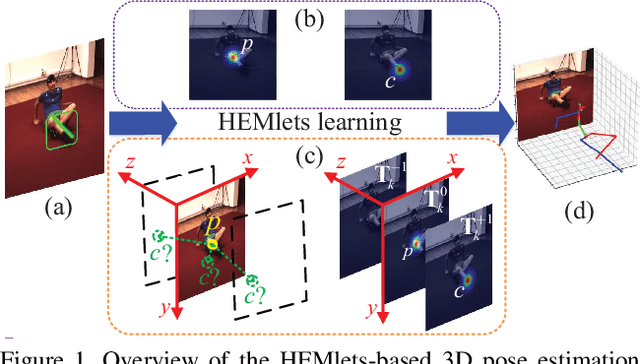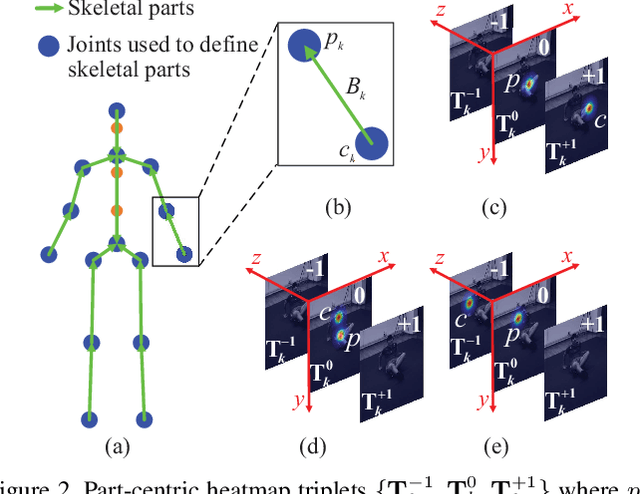HEMlets Pose: Learning Part-Centric Heatmap Triplets for Accurate 3D Human Pose Estimation
Paper and Code
Oct 26, 2019



Estimating 3D human pose from a single image is a challenging task. This work attempts to address the uncertainty of lifting the detected 2D joints to the 3D space by introducing an intermediate state - Part-Centric Heatmap Triplets (HEMlets), which shortens the gap between the 2D observation and the 3D interpretation. The HEMlets utilize three joint-heatmaps to represent the relative depth information of the end-joints for each skeletal body part. In our approach, a Convolutional Network (ConvNet) is first trained to predict HEMlests from the input image, followed by a volumetric joint-heatmap regression. We leverage on the integral operation to extract the joint locations from the volumetric heatmaps, guaranteeing end-to-end learning. Despite the simplicity of the network design, the quantitative comparisons show a significant performance improvement over the best-of-grade method (by 20% on Human3.6M). The proposed method naturally supports training with "in-the-wild" images, where only weakly-annotated relative depth information of skeletal joints is available. This further improves the generalization ability of our model, as validated by qualitative comparisons on outdoor images.
 Add to Chrome
Add to Chrome Add to Firefox
Add to Firefox Add to Edge
Add to Edge